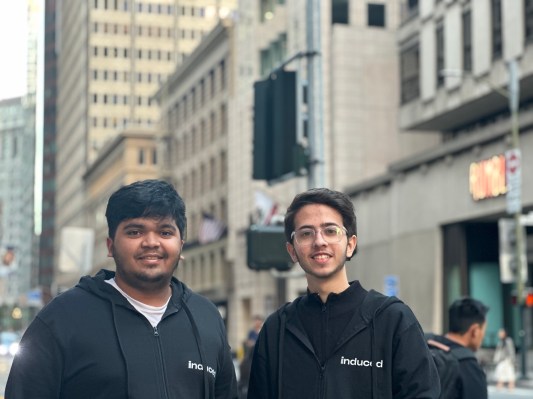Sam Altman, Peak XV, and Daniel Gross and Nat Friedman’s AI grant are among backers of an AI startup, founded by two teenagers, that’s aiming to assist businesses in automating numerous workflows in previously unexplored ways.
Induced AI, founded this year, enables businesses to input their workflows in plain English, subsequently converting the instructions into pseudo-code in real time for numerous repetitive tasks typically managed by back offices.
The eponymous platform spins up Chromium-based browser instances, and uses its tech to read on-screen content and control the browser similarly to a human in order to complete various steps of a workflow. This allows the browser instances to interact with websites even if they don’t have an API, Aryan Sharma, Induced AI co-founder and chief executive, showed in a demo.
Zapier is among the firms that pioneered the API integration economy, connecting disparate applications, offering businesses a route toward automated and efficient workflows. The platform’s use of automated workflows provided companies with a mechanism to streamline operations and innovate, all without necessitating an in-depth understanding of technical processes. Eighteen-year-old Sharma (at right in the lead picture), who co-founded the startup with 19-year-old Ayush Pathak (left), is betting that Induced AI can build an integration economy for the browser-native workflows.
The workflows can be complex and logic-driven processes, including two-factor authentication dialogues. Induced AI applies a bi-directional interaction system, enabling human involvement in certain steps as needed, while autonomously managing the remainder, said Sharma.
“We’ve purpose-built a browser environment on top of Chromium that’s designed for autonomous workflow runs. It has its own memory, file system, and authentication credentials (email, phone number) to do complex flows. As far as I know, we’re the first to take this approach of redesigning the browser for native AI agent use. So complex logins, 2FA (we auto fill in auth codes/SMSs), file downloads, storing and re-using data is possible that other autonomous agents can’t do,” said Sharma.
In contrast to existing models, where an individual trying to program such instructions might spend hours on tasks like tagging all HTML elements, Induced AI eliminates the need for manual tagging. Its system can discern the necessary information from English instructions and dynamically adjust them as needed for tweaks.
Induced AI is certainly not alone. Chances are you have seen several similar modern Robotic Process Automation concepts floating around on X and Hacker News in recent months. But Sharma pointed out several factors that set Induced AI apart from others. Induced AI can run multiple tasks simultaneously and it’s fully remote, for instance, he said.
The startup, which currently has just five members, has signed up a few small to mid-sized customers in recent weeks, including a sales firm that uses Induced AI for employee onboarding, and is working on many new use cases, said Sharma.
Induced AI said Tuesday it has raised $2.3 million in its seed funding round, and its investors include SignalFire, Untitled Ventures, SV Angel, Superscrypt, Balaji Srinivasan, Julian Weisser, IDEO Colab, and OnDeck.
“Induced is the definition of RPA 3.0. Not only are they taking a huge leap forward in providing true human-like interaction and efficiency, they democratize access by allowing users to describe their workflows in natural language and execute parallel agents any back-office workflow,” said SignalFire’s Elaine Zelby in a statement.
